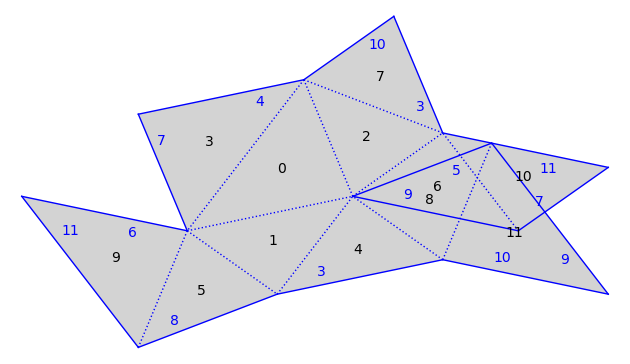Relative Period Deformations#
The Arnoux-Yoccoz surface#
from flatsurf import translation_surfaces
s = translation_surfaces.arnoux_yoccoz(3).canonicalize()
s.plot()

field = s.base_ring()
field
Number Field in alpha with defining polynomial x^3 + x^2 + x - 1 with alpha = 0.5436890126920763?
alpha = field.gen()
AA(alpha)
0.5436890126920763?
m = matrix(field, [[alpha, 0], [0, 1 / alpha]])
show(m)
\(\displaystyle \left(\begin{array}{rr}
\alpha & 0 \\
0 & \alpha^{2} + \alpha + 1
\end{array}\right)\)
Check that \(m\) is the derivative of a pseudo-Anosov of \(s\).
(m * s).canonicalize() == s
True
Rel deformation#
A singularity of the surface is an equivalence class of vertices of the polygons making up the surface.
s.point(0, 0)
Vertex 0 of polygon 0
We’ll move this singularity to the right by two different amounts:
s1 = s.rel_deformation(
{s.point(0, 0): vector(field, (alpha / (1 - alpha), 0))}
).canonicalize()
s2 = s.rel_deformation(
{s.point(0, 0): vector(field, (1 / (1 - alpha), 0))}
).canonicalize()
Note that by the action of the derivative of the pseudo-Anosov we have:
s1 == (m * s2).canonicalize()
True
By a Theorem of Barak Weiss and the author of this notebook, these surfaces are all periodic in the vertical direction. You can see the vertical cylinders:
s1.plot()
